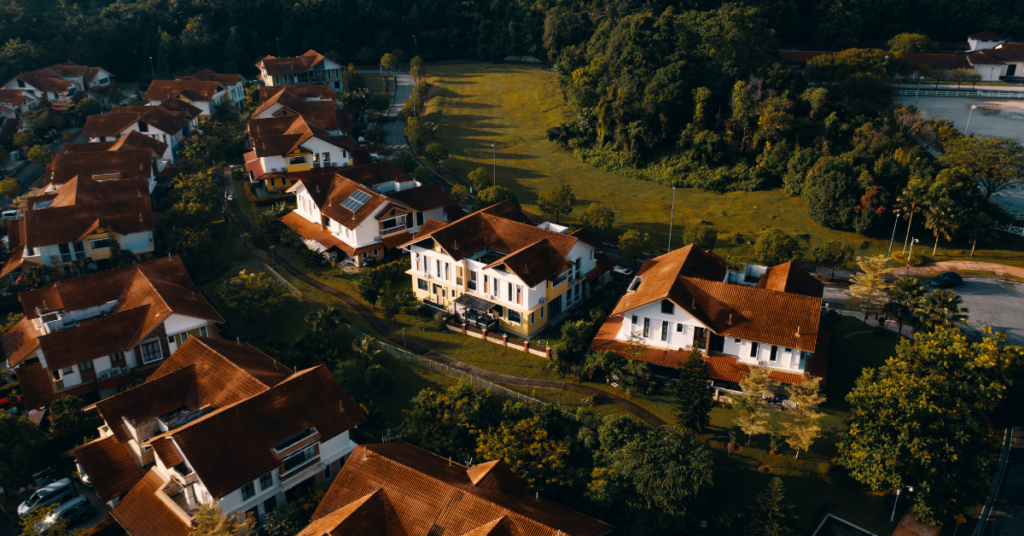What is an ecovillage? Learn everything about an ecovillage for a complete understanding of this topic

What are Ecovillages?
Ecovillages are compact, self-sufficient communities that derive their existence and the resources required from the natural environment. There are over 10,000 ecovillages worldwide, mostly in rural regions, where residents construct communities based on collaboration, self-sufficiency, renewable energies, and environmentally friendly materials. Ecovillages are communities that are meant to be socially, economically, and ecologically sustainable.
An ecovillage, according to the Global Ecovillage Network (GEN), is a community that employs local participatory procedures to holistically integrate ecological, economic, social, and cultural elements of sustainability to regenerate social and natural ecosystems. An ecovillage is a traditional or intentional community that strives to be more socially, culturally, economically, and environmentally sustainable.
Through purposeful physical design and resident behavior choices, an ecovillage seeks to have the least possible detrimental influence on the natural environment. It is intentionally created to renew and repair its social and ecological surroundings through locally owned, participatory methods. People residing in these ecological villages and communities are bound together by common environmental, socioeconomic, and cultural-spiritual ideals.
The residents of these communities specifically seek solutions for problems such as environmentally damaging electricity, water, transportation, and waste-treatment systems, as well as the broader social structures that reflect and support them. Many people believe that the breakdown of traditional forms of community, wasteful consumerist lifestyles, the destruction of natural habitat, urban sprawl, factory farming, and over-reliance on fossil fuels are trends that must be reversed to avert ecological disaster and create more profitable and more fulfilling ways of life.
Ecovillages are a type of sustainable community that is generally designed and maintained collaboratively. Ecovillages are communities where individuals feel encouraged and accountable to those around them. They give people a strong sensation of belonging to a group. People are therefore able to engage in making decisions that affect their own lives as well as the lives of others in a transparent manner. Most ecovillages do not emphasize specific spiritual practices, but they do appreciate and support the Earth and all living species on it, as well as cultural and creative enrichment and expression and spiritual diversity. Ecovillages allow individuals to connect with the living planet on a personal level.
People love interacting with the Earth, water, wind, plants, and animals on a regular basis. They meet their basic requirements, such as food, clothes, and shelter. The ideas that underpin ecovillages may be applied to both urban and rural environments, as well as developing and developed countries. Advocates want infrastructural independence and a sustainable lifestyle for residents who trade only locally or within an ecoregion. Organic farming, permaculture, and other techniques that improve ecosystem function and biodiversity are commonly used in rural ecovillages.
Many of the design concepts of cohousing are used in ecovillages but with a larger ecological focus and a more “organic” process, as is typical in permaculture design. Local organizations and localities in ecological communities develop their own scrip currencies and trading networks.
Origins of Eco Villages
The origins of these settlements are unknown, but they were recognized internationally in 1995 during a global summit of ecovillages held in Scotland. This symposium resulted in the formation of the Global Ecovillage Network (GEN), which laid the groundwork for the current movement and serves as a link between thousands of projects on five continents.
One of the main theorists of ecological communities, American philosopher Robert Gilman, described ecological communities as human-scale, full-featured settlements in which human activities are harmlessly integrated into the natural world in a way that promotes healthy human development and can be effectively persisted indefinitely in 1991. Ecovillages are built on a single guiding principle: care for people and the environment. They promote a style of life based on solidarity and ecology, in which people of a community work together to build more ethical, fair, and equal societies.
Ecovillages typically have a population of 50 to 250 people. However, some have more than 1,000. Everyone in the population has the same goals in mind, and they work together to attain them. They hold monthly meetings where they exchange ideas and promote sustainable economic, social, cultural, and environmental activities.
Earthaven Eco-Village, near Black Mountain, North Carolina, was the first Ecovillage, and it was built following permaculture principles. In 1993, the first people moved into the empty land. Earthaven Eco-Village now has approximately 70 people living off the grid on 368 acres of property as of 2019. In 1995, during the annual fall conference of Findhorn, Scotland, the ecovillage movement began to form. Hundreds of applications were turned away from the conference, which was titled “Ecovillages and Sustainable Communities.” Following the conference, several intentional communities, including Findhorn, began referring to themselves as “ecovillages,” spawning a new movement.
The Global Ecovillage Network, which was founded by a group of about 25 people from various countries who had attended the Findhorn conference, crystallized the event by connecting hundreds of small projects from all over the world with similar goals but who had previously operated without knowing each other. Denmark’s Gaia Trust is committed to supporting the network for the first five years. Ecovillages may now be found in over 70 countries across six continents.
Since the 1995 conference, a number of the Global Ecovillage Network’s founding members have experimented with different methods to ecovillage development in an attempt to create settlements that are appealing to mainstream culture in order to increase acceptance of sustainable development. Living Villages and The Wintles, where eco-houses are organized such that social connectedness is maximized and inhabitants have shared food-producing grounds, forest, and animal husbandry for increased sustainability, is one of these that has had some success.
Contribution of Eco Villages to Sustainability
Cities are home to over 3,500 million people or almost half of the world’s population. The United Nations estimates that by 2030, this number will have increased to 5,000 million. According to this organization, urbanization, which accounts for only 3% of the world’s surface area, consumes between 60% and 80% of total energy and emits 75% of carbon emissions.
According to the United Nations, urbanization poses a danger to freshwater resources, wastewater, and public health. The entire international community is concerned that the harm may be irreparable, which has prompted ecovillages to promote their sustainable approach. They provided an example of how to prosper without jeopardizing the planet’s future. An alternative birthing center in Kenya, a project in Mexico to reconstruct regions damaged by earthquakes in Puebla and Chiapas in a sustainable manner, and a proposal to create accessible homes with scrap materials in remote areas of India were among the top GEN efforts in 2017.
Although there are financial (and other) obstacles to establishing ecologically healthy residential neighborhoods, there are some important guidelines. In general, sharing is practical. One cannot fit as much “stuff” into a smaller place, and sharing accommodations might help you save money on products and services. Ecovillages aid in the reduction of a person’s environmental impact. Ecovillages that re-inhabit and repair existing structures conserve resources. Calafou, a postcapitalist eco-industrial colony northwest of Barcelona that accommodates 30 people in an abandoned textile manufacturing complex, is an excellent example.
Ecovillages and ecological communities have numerous benefits, such as the following:
Natural resources are utilized
Using sustainable energy sources such as solar and wind power is one way to show respect for the environment. They also use environmentally friendly elements such as mud, wood, and straw in their construction.
Eco village helps to restore the ecosystem
Ecological communities are environmentally friendly and help to restore the environments in which they exist (recycling, reforestation, restoration of habitats, etc.).
Eco village provides community education
Positive qualities such as ecology, solidarity, equality, tolerance, generosity, diversity, hospitality, respect, human collaboration, and self-sufficiency are promoted in ecovillages.
Coexistence that works here
Commitment to these values promotes conversation and participation in communities where disagreements are resolved via conversation, and members are more inclined to participate in decision-making.
An economy that is responsible
They employ regenerative technology and activities, such as bioclimatic building and organic agriculture, rather than land-damaging equipment and chemicals. As a result, they use less energy and contribute to the battle against global warming.
Examples of Eco Villages
The Global Ecovillage Network (GEN) reported in its most recent annual report (2017) that there were approximately 10,000 ecological communities in 114 countries, 35 state networks, 135 GEN ambassadors, 130 trainers, 32 associations, and 23 governments interested in implementing this type of program internally.
Here is a list of eco villages that had a great overall impact:
- La Montana (Chile) is a town in the state of New Mexico. It has been in operation since 1992, and it provides one- to twelve-month volunteer work to help people integrate into communal life. It encourages people to live in a way that is both ecologically beneficial and long-term.
- EcoVillage Yarrow (Canada). It was founded in 2001 and is housed on a ten-hectare dairy farm. It is separated into two sections: residential and agricultural. There is a plan to expand and build a community with a capacity of 35 houses.
- The Farmhouse (USA). It is one of the country’s largest and oldest ecovillages, with 220 members. It was founded in 1971. It has won several accolades for its efforts to protect native American rights.
- Las Gaviotas (the Gaviotas) are a group of (Colombia). The organization was founded in 1971 by a group of engineers and scientists who wanted to live a more sustainable existence. They maintained a hospital for the indigenous people from 1980 until 1990. They created a number of inventions to benefit the community.
- Family Konohana (Japan). This Ecovillage was founded in 1993 at the foot of Mount Fuji. Despite the fact that they are not related by blood, almost 100 residents consider each other family. It’s an agricultural community here.
- Waters of Crystal (Australia). This building, which was built in 1986, houses more than 200 people. It was awarded the World Habitat Award in 1996 and relies on commerce, tourism, the lighting sector, and educational activities to make a livelihood.
- Madagascar Ecovillage (Madagascar). This group began in 2013 and currently has 11 members. They aim to improve the rural population’s quality of life, instill in them sustainable economic and environmental practices, and research and repair natural regions.
- Dhaj village (India), located in the woodland region of Gujarat’s Surat city, has been designated as India’s first Ecovillage. Dhaj village is located around 70 kilometers away from the nearby city Surat. The villagers make use of all-natural resources in their daily life, including solar panels for electricity, biogas plants, and rainwater collection tanks, among other things.
How to Create a Sustainable Village OR Eco Villages
Due to the obvious growing worldwide environmental, social, cultural, and economic challenges that our planet is experiencing, it is only natural that we need to modify our lifestyles. Carbon dioxide emissions are accounted for by cities in the range of 71 to 76 percent. In this instance, ecovillages may be viewed as a movement toward a more sustainable world and future. These communities believe that human togetherness is a powerful instrument for restoring our initial home, the planet.
Unlike a traditional neighborhood, an ecovillage promotes a low-impact, high-quality lifestyle. Ecovillage communities promote sustainable construction, local food production, renewable energy, and a natural lifestyle. One can work towards building sustainable communities in the following ways:
- Begin with the people. Land and structures are always available to a group of individuals who have a shared goal and dedication.
- Assemble a core group of people with some type of prior experience. If you don’t have one, locate someone who does and convince them of your point of view.
- Don’t be in a rush but be persistent and determined. Take the time to build the Design Team’s culture, get political and community support, improve our track record, and attract resources to help us go forward.
- Continue to educate all group members on the overview. Provide members with casual and interesting chances to learn about all of an ecovillage’s primary systems and sub-systems: social, economic, and ecological.
Ecovillages are vital educational institutions, serving as real-life models of how to live properly. People in ecovillages experiment with new ways of life and build new narratives that are more positive, practical, and constructive ways of perceiving the world. It’s not about denial or guilt; it’s about being active and involved. We all cannot be a part of ecological communities, but we can do our part in contributing to sustainability by adapting and learning from these communities. We can further apply our learning and incorporate them into our daily lives.
Editor’s Note
Ecovillages can be one of the many potential solutions to climate change. The region, in general, respects the environment and promotes sustainability. Besides, ecovillages are gradually becoming a holiday destination for the elites who are tired of living within the city pollution. The business model around ecovillages would definitely help the concept to be popular among the masses.
Let us know if you prefer spending your retired life in a peaceful ecovillage or not!
#BleedGreen
Frequently Asked Questions (FAQs)
What are some examples of green living?
Examples of small-scale green living that can be practiced often at home may be cleansers, laundry detergents, material diapers as opposed to disposable diapers, material napkins instead of disposable napkins, and large merchandise together with solar panels or tankless water heaters.
Why is green environment important?
Sustainable products used on a daily basis help us conserve water, energy, and essential natural resources while also additionally providing aid in controlling pollution.
Are eco-villages really helpful?
An ecovillage endeavors to create the most un-conceivable adverse consequence on the regular habitat through the deliberate actual plan and occupant conduct decisions. It is deliberately planned through privately claimed, participatory cycles to recover and re-establish its social and common habitat.
What are the key characteristics of ecological communities?
Ecological communities by and large aim to limit squander, lessen utilization and safeguard open space. In a perfect world, they don’t utilize assets quicker than they can be recharged, and they don’t deliver squander quicker than it tends to be acclimatized once more into the climate.


Hello everybody I am Sara Sahai Marwah, and I am a content writer. I write articles about sustainability and how to achieve it for Bleed Green. I am a second-year at Symbiosis School for Liberal Arts. I am currently majoring in International Relations with a double minor in psychology and media studies.




